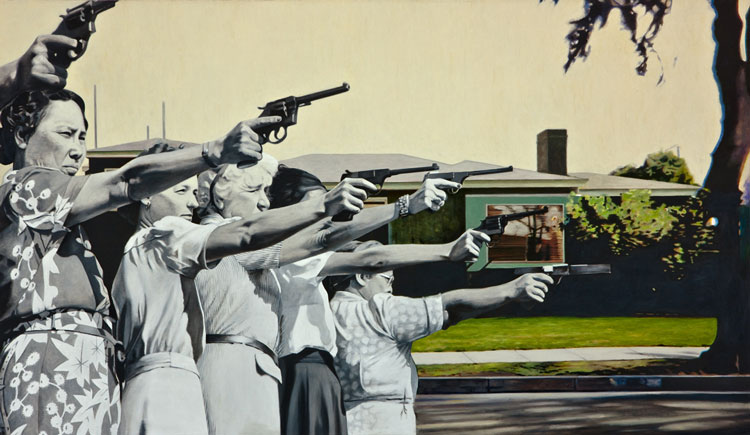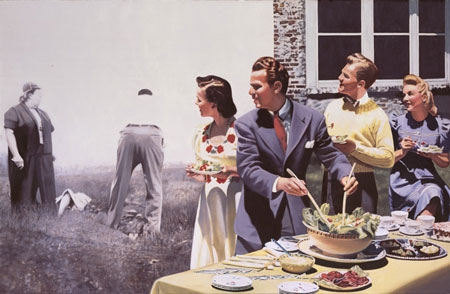Martin Mull has certainly earned his place in the canon of exceptional narrative painters, those for whom painting is a delicate and complicated process by which the artist quantifies his/her relationship to the world around them. Mull’s assessments are usually dark, even sinister at times, and this darkness derives from a seemingly inherent flaw in our humanity, as if the figures in Mull’s universe, poised on the brink of personal reflection and faced with the invidious task of self assessment, would suddenly and inexplicably vanish into thin air in a puff of smoke. As with other narrative painters, including Edward Hopper or even John Currin, Mull is less interested in our human failings and much more concerned with the choices we make that determine our providence, collective or otherwise.
A man of many singular talents, Mull is probably best known for his comedic antics on the 1977 television show Fernwood Tonight, where he played a zany talk show host named Barth Gimble. Unlike some celebrity artists who “take up” painting as a weekend hobby, Mull has a fierce and uncompromising discipline that spans some 30 years, beginning with a solo show in 1980 at the Molly Barnes Gallery. Since that time, Mull has exhibited widely in Los Angeles and has been represented by many first rate galleries including Patricia Faure and presently Samuel Freeman. In 2006 Mull had a retrospective at the Las Vegas Museum of Art that demonstrated as never before the artist’s far-reaching human concerns. At the core of Mull’s practice is a deeply rooted compassion for what many a writer has termed the “ineluctable human condition,” and what happens when we stand at odds with our own complicated nature. In Tea Party (2010) for example, a firing squad of 1950’s middle-America women, both young and old, stand, pistols raised, to face an unseen “enemy.” This image captures the Cold War terror that engulfed this country during the 1950s—a terror that was largely fueled and sustained by the government.
In a lot of his images, Mull expresses an inherent mistrust of the “blind faith” mentality that many Americans ascribe to even today, be it religious fervor, or the simple inability to question authority on any level. In Carpe Diem (2007) a businessman walks directly into what appears to be a nuclear detonation. He is the physical embodiment of the American Dream, though rarely does that “dream” take into consideration our human predilection toward violence. We are, after all, animals, and no one understands the tension between instinct and reason better than Mull, who, rather than capitalize on the obvious cruelty, focuses his attention instead on the more subtle inconsistencies that make up any life. Somewhere in the world a person is experiencing a perfect moment of sustained happiness even as the bomb goes off. Beauty exists in the face of ugliness, or despite it.
Images courtesy Samuel Freeman gallery




